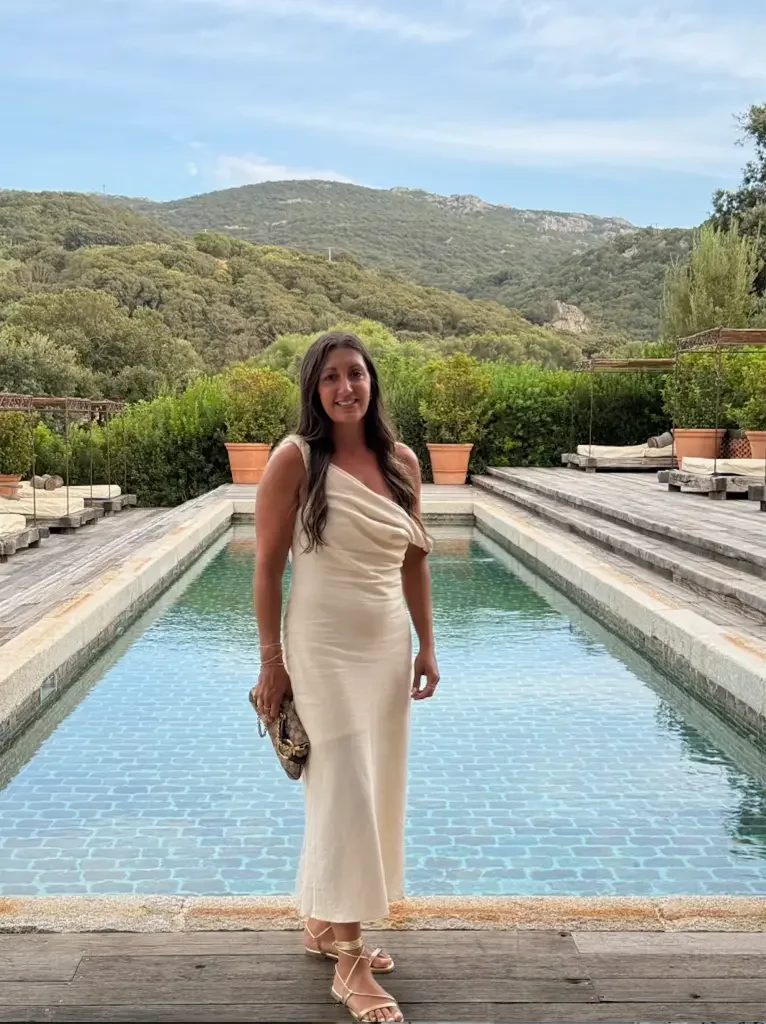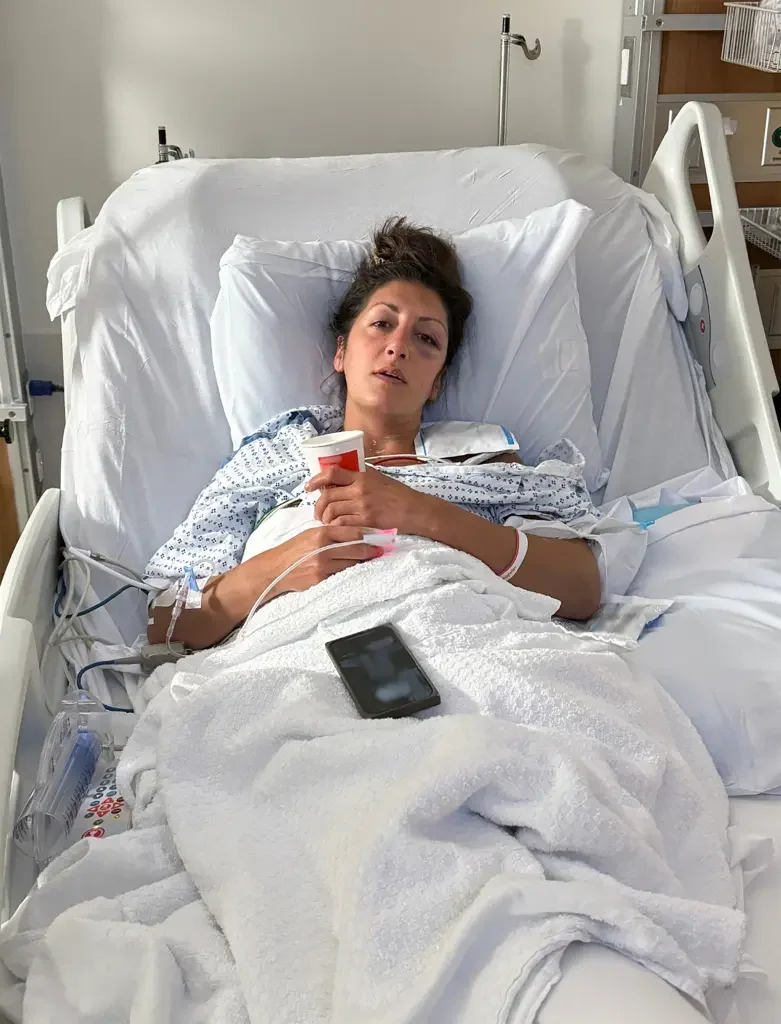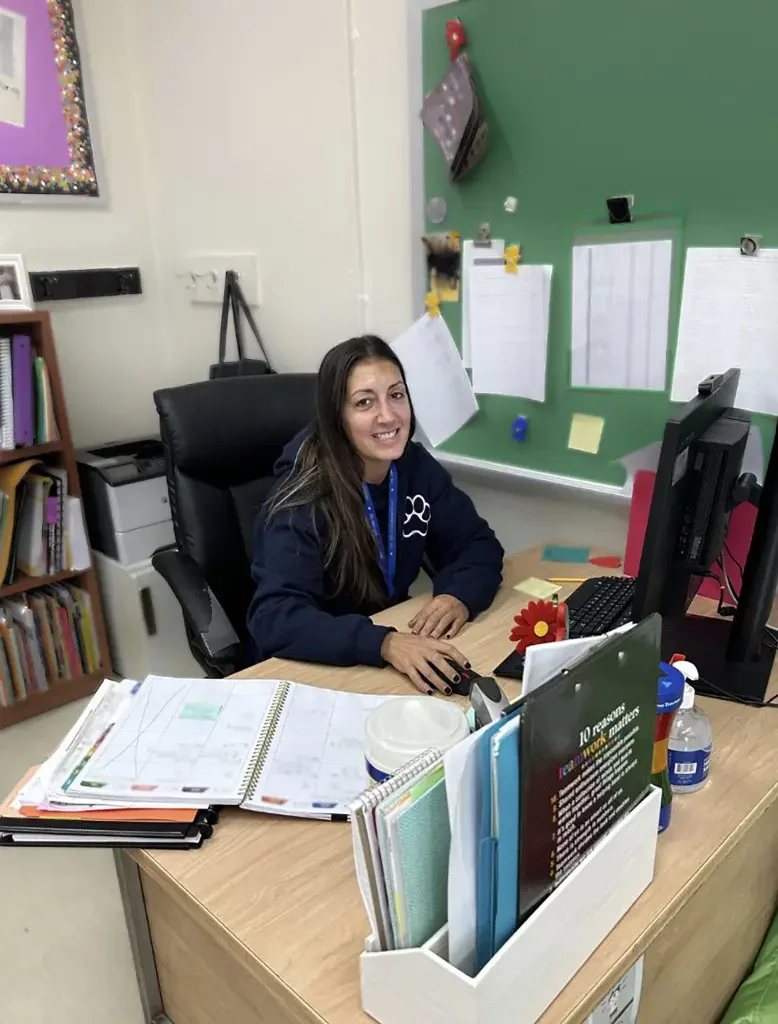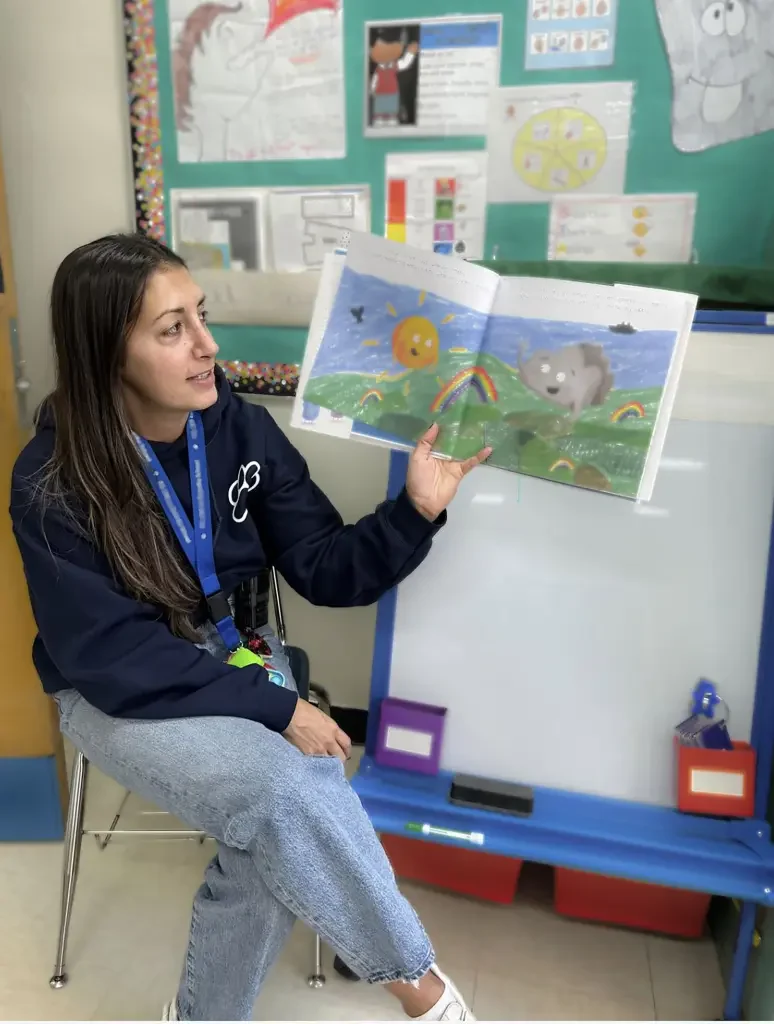Krista Figari was only 38 when her world turned upside down — and the moment it happened was caught on camera.
What started as an ordinary morning in her Manhattan apartment turned into a terrifying medical emergency that would change her life.
“It was like a scene out of a Michael Bay movie,” Figari told The New York Post.
MORE NEWS: Al Pacino Reportedly Regrets Never Marrying Diane Keaton Following Her Death at 79 [WATCH]
After waking up, she followed her daily routine: got out of bed and made it.
But as she turned around, something strange and frightening happened.
“I just kind of fell towards my dresser and fell down onto the floor,” she said. “Then I couldn’t move my arm and my leg. And at that point, I was like, this is weird.”
Though she couldn’t stand, Figari managed to reach her phone and dialed her cousin, her building’s superintendent, and 911.

Panic began to rise when she realized her super didn’t have a key to her top door lock. But then, a stroke of luck — he remembered the fire escape.
Crawling through the window, he let emergency responders in, sparing them from having to break down the door.
At NewYork-Presbyterian/Weill Cornell Medical Center, Figari learned what had happened: she had suffered a wake-up stroke — a type of ischemic stroke that occurs during sleep, and is only discovered upon waking. She was stunned.
“When they said ‘stroke,’ it didn’t even register to me,” she recalled. “I associate a stroke with someone who’s old, so that was the last thing I ever thought it was going to be.”
Her story is becoming more common. Experts say that while strokes are typically associated with older adults, they are increasingly affecting younger people — especially those under 50.

In fact, around 10–15% of strokes occur in adults under 50, and one in four adults over 25 will experience a stroke in their lifetime.
There are two main types of stroke: ischemic, which makes up about 87% of all cases and involves a blocked blood vessel, and hemorrhagic, which is caused by bleeding in the brain.
Wake-up strokes fall under the ischemic category, with about 20% of them occurring while the patient sleeps.
MORE NEWS: ‘The View’ Co-Host Stuns CNN Audience with Her Praise of Trump’s Israel-Hamas Peace Deal [WATCH]
Time is critical with strokes, especially when the exact moment of onset is unclear. Fortunately, Figari’s medical team was equipped to act fast.
“At NYP-WC we are very fortunate to have the resources and infrastructure to obtain [an] emergent MRI to try and help these patients who would otherwise not be eligible for treatment,” said Dr. Nicholas Janocko, a neurologist at the hospital.

Thanks to those resources, Figari received thrombolysis, a clot-dissolving medication, shortly after arriving. Within 15 minutes, her movement began to return. She spent five days in the hospital, but remarkably didn’t require physical, occupational, or speech therapy.
Still, doctors delivered unsettling news. Figari had a patent foramen ovale (PFO) — a hole between the upper chambers of the heart that failed to close after birth. It’s a congenital condition affecting about 25% of adults, and often has no symptoms.
“I was actually a very active kid, I played every sport, I danced,” she said. “I had asthma, but that was it.”
PFOs are believed to play a role in 55% of strokes in people under 60, Dr. Janocko noted. In Figari’s case, her PFO was especially large — a grade 4 on a scale from 0 to 5.

In July, she underwent a minimally invasive procedure to close the hole. A small device was inserted into her heart, acting as a permanent shield to prevent clots from entering her bloodstream and reaching her brain.
A year later, Figari is close to full strength. She’s back to Pilates and Orangetheory Fitness, though she still experiences slight weakness on her left side.
“When I write or when I’m typing or when I’m working out, when I’m doing things where I have to be dominant on my left side, it’s weaker and much harder for me to do,” she said.
To help prevent a recurrence, she now takes aspirin daily and has made adjustments in her life — more people have keys to her apartment, and she has a better plan in place in case of another emergency.
“If you feel like something is wrong, then trust your gut and make sure you check it out,” she advised. “Or call someone and let someone know, because if you don’t do something about it quickly, then you could have long-term effects.”
Dr. Janocko said stroke rates among younger adults are rising due to increased prevalence of risk factors like obesity, high blood pressure, diabetes, smoking, substance use, high cholesterol, and sleep apnea.
To help recognize stroke symptoms early, experts urge the public to remember the BE FAST acronym:
B: Balance — sudden loss of coordination
E: Eyes — blurred, double, or lost vision
F: Face drooping or numbness
A: Arm weakness or numbness
S: Speech difficulty or slurred speech
T: Time to call 911
Figari’s nanny cam caught the moment she collapsed — and while it’s hard to watch, she hopes sharing it will raise awareness and possibly save a life.
“I never thought this could happen to me,” she said. “But it did. And now I just want people to know the signs — and not to wait.”
Join the Discussion
COMMENTS POLICY: We have no tolerance for messages of violence, racism, vulgarity, obscenity or other such discourteous behavior. Thank you for contributing to a respectful and useful online dialogue.